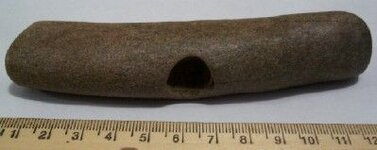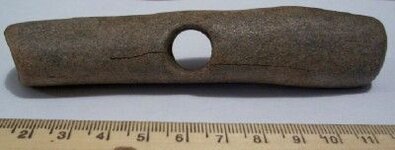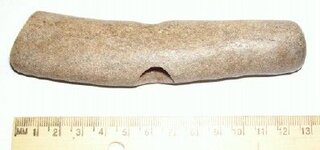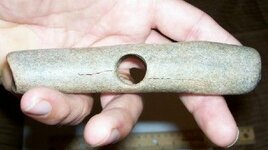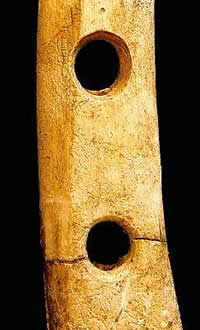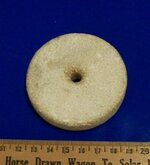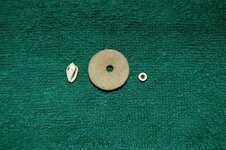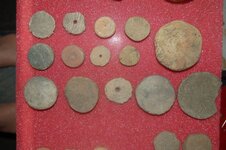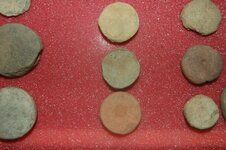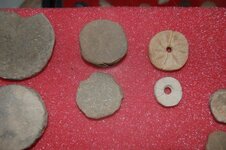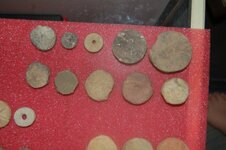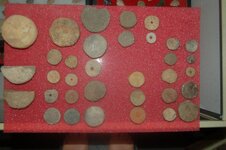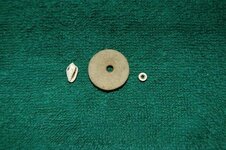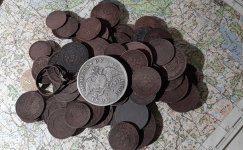figgins diggins
Jr. Member
This is the second of these we have found while fossil hunting. I sold one almost exactly like this one last year. Regretted it of course, because I thought it had the potential to be a pretty significant find, and figured I would never see another. Needed the extra $$$ a little more at the time if you know what I mean.
My son found this one day before yesterday. Unique in itself but practically identical in size, shape, weight, and was found within a few hundred yards of the first. Any information greatly appreciated. Can't find much on the internet about antler artifacts. Don't think the hole got in one, much less two alike, by accident.
My theory is that it has the potential to predate the stone spearthrower weights, simply because antler would have been easier to drill. We find many bones from animals such as bison antiquus, camels, and even mastodon that were part of the mass extinction around 10,000 years ago in this exact area. I will include some of our fossil finds over in the fossil department for comparison.
My son found this one day before yesterday. Unique in itself but practically identical in size, shape, weight, and was found within a few hundred yards of the first. Any information greatly appreciated. Can't find much on the internet about antler artifacts. Don't think the hole got in one, much less two alike, by accident.
My theory is that it has the potential to predate the stone spearthrower weights, simply because antler would have been easier to drill. We find many bones from animals such as bison antiquus, camels, and even mastodon that were part of the mass extinction around 10,000 years ago in this exact area. I will include some of our fossil finds over in the fossil department for comparison.
Attachments
Upvote
0


